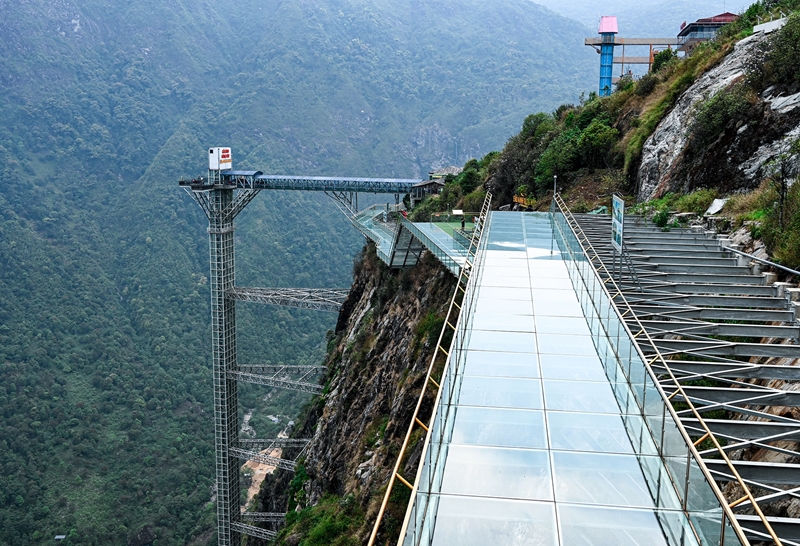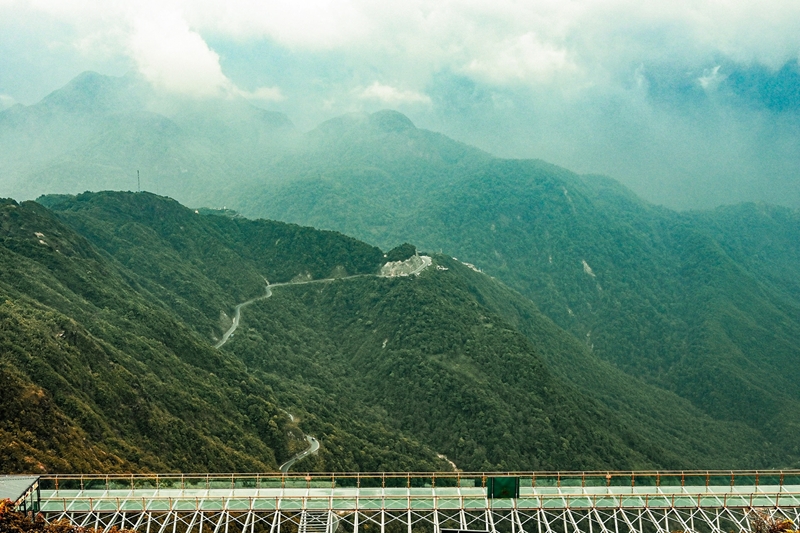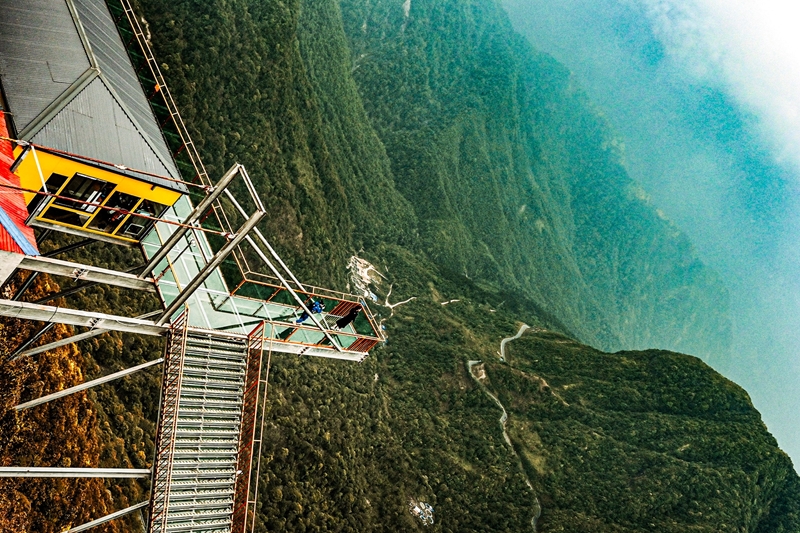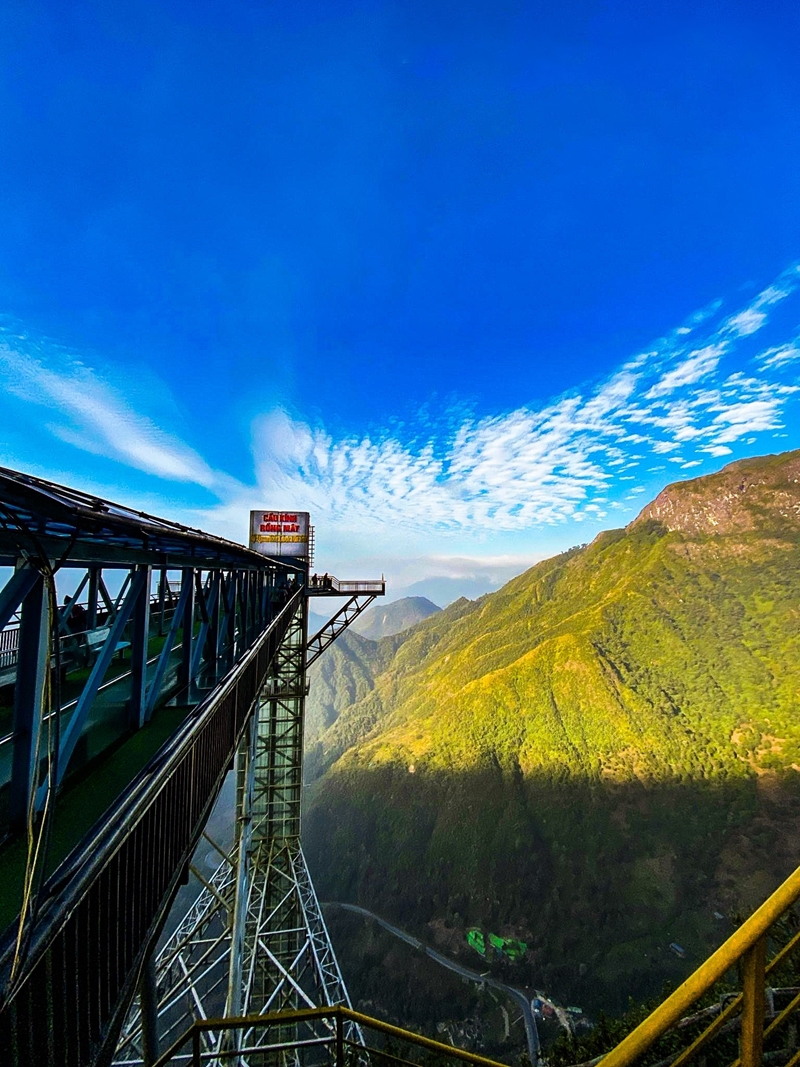Exploring Lai Chau from highest glass bridge of Vietnam
Tuesday, 14/05/2024 16:23 (GMT+7)
(CPV) - Standing at an altitude of over 2,000 meters, gazing at the Northwest mountains and forests from Rong May glass bridge, the highest of Vietnam, is a truly impressive experience for every first-time visitor to Tam Duong district, Lai Chau province.
 |
| Dubbed "heaven's gate" on top of O Quy Ho Pass, Rong May glass bridge tourist area is located in Son Binh commune, Tam Duong district, Lai Chau province, only 17 kilometers from Sa Pa town (Lao Cai). |
 |
| To reach Rong May glass bridge, visitors follow a path on the mountain, then go up the 70 meters long elevator system climbing in mid-air. The elevator chamber is designed with 3 transparent glass surfaces facing outward, taking visitors through the clouds and breathtakingly beautiful natural landscape of the Northwest region. |
 |
| The elevator is also the fastest way to reach the glass bridge, it is estimated to take only 1.5 minutes to reach the top of the mountain instead of having to travel by road. |
 |
| Stepping out of the elevator, visitors will encounter a glass bridge system reaching out 60 meters from the cliff. From this location, tourists can fully feel the typical image of Lai Chau with winding passes, terraced fields, rolling mountains and forests, and the "backbone" Hoang Lien Son mountain range - the roof of Southeast Asia. |
 |
| Standing on the glass bridge and looking out into the distance presents a breathtaking natural scene |
 |
| Many tourists find the 2,000-meter altitude Rong May glass bridge an unforgettable experience. |
 |
| Standing on the bridge, tourists can fully admire the magnificent landscape of Hoang Lien Son Range. |
 |
| Located at the gateway of Tam Duong district, Rong May glass bridge is also the first destination on the road to explore and experience many other famous tourist destinations of Lai Chau province such as O Quy Ho Pass - one of the four great passes of Vietnam, Putaleng Peak, Tien Son Cave, Pu Sam Cap Cave, Tan Uyen tea hill, and community tourism destinations rich in cultural identities of ethnic minority groups. |
BTA